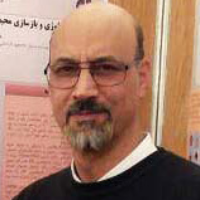Biostratigraphy and paleoenvironmental studies of the Garau Formation in Well A, Central Lurestan, Northwest of Zagros
The Garau Formation is one of the Lower Cretaceous source rocks in Zagros sedimentary basin. This formation has been a great target for many studies due to its stratigraphic and economic importance as it has been acting as a source and sometimes as a reservoir in Zagros Basin. This formation in well A in central Lurestan has a thickness of 794 m and lithologically consists of argillaceous limestone, shale and marl. The formation in this well is overlain by the Surgah Formation and disconformably rests on the evaporites of the Gotnia Formation. In order to establish the age and biozonation of the Garau Formation in this well, foraminiferal contents of 528 thin sections have been studied and a biozonation has been established. Material and
Thin sections were studied under a light microscope and based on the FOD and LOD of the index species of foraminifera presented in a range chart a biozonation has been established based on Wynd (1965) and Premoli Silva and Verga (2004). Discussion and
The Garau Formation is 794 meters thick in a well A in central Lurestan and for the confidentiality reason, it is named here as well A. The formation here is confined between the Gotnia Formation at the base and the Surgah Formation at the top. This well situated about a few Km west of Kermanshah and a few Km northeast of Eslam-Abad in the Central Lurestan Province. From the viewpoint of lithology, the Garau Formation in this well is divided into three intervals; the basal interbeds of marl and shale, limestone and shaly limestone units at the middle part and finally upper shaly beds.
A total of 528 thin sections from the cutting samples and 40 thin sections from the core samples of the formation were prepared and studied for age dating and biozonation. Fifteen genera and 48 species of planktonic foraminifera were identified leading to differentiation of 14 planktonic foraminiferal biozones from the Berriasian to middle Cenomanian in age. These established biozones correspond to Radiolaria Flood Zone #12, Assemblage subzsone #13 and Assemblage zone #20 of Wynd (1965).
Also paleoenvironmental investigations were performed on the samples; the identified microfacies and planktonic foraminifera depth morphotypes suggested that the strata of this rock unit deposited in a deep marine setting.
Sixty seven samples were also prepared and studied for their palynological contents. All prepared samples were barren of palynomorphs however, percentage of main groups of palynological elements were calculated for palynofacies studies. Using Tyson diagram (1993), led to the recognition of two types of palynofacies (IX and VI) and proved domination of an anoxic deep marine condition during depositional course of the formation in this well.
On the base of gamma log and microscopic kerogen analysis result, shaly intervals of the formation, especially the basal shales, can be counted as a source rock. For this reason, three samples were selected for rock eval pyrolysis and the obtained results showed the Kerogen is type III which cannot produce enough petroleum. Although, the Garau Formation in well A has high content of organic matters and it is at mature stage, but due to the low values of hydrogen index (HI), the formation has no potential to act as a source rock. Acknowledgement
The authors wish to thank the exploration directorate authorities of the NIOC for providing data such as thin sections and allow to publish these data. Keywords: Garau Formation; Biostratigraphy; Planktonic foraminifera; Well A; Microfacies; Palynofacies References
Premoli-Silva, I., & Verga, D., (Eds.), 2004. Practical manual of Cretaceous planktonic foraminifera, International School on Planktonic foraminifera, Cretaceous. Universities of Perugia and Milan, Tipografia Pontefelcino, Prugia (Italy), 248 p.
Tyson R.V., 1993. Palynofacies analysis. Applied Micropaleontology, 153-191.
Wynd, J.G., 1965. Biofacies of the Iranian consortium-agreement area. Iranian Offshore Oil Company, Tehran, Report 1082.
- حق عضویت دریافتی صرف حمایت از نشریات عضو و نگهداری، تکمیل و توسعه مگیران میشود.
- پرداخت حق اشتراک و دانلود مقالات اجازه بازنشر آن در سایر رسانههای چاپی و دیجیتال را به کاربر نمیدهد.



